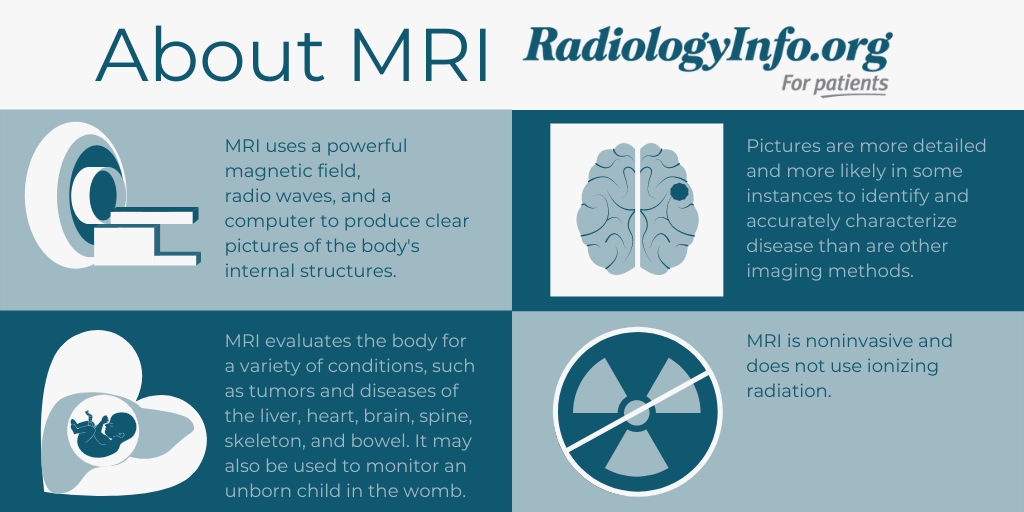Magnetic Resonance Imaging (MRI)
 Magnetic resonance imaging (MRI) uses a powerful magnetic field, radio waves and a computer to produce detailed pictures of the body's internal structures that are clearer, more detailed and more likely in some instances to identify and accurately characterize disease than other imaging methods. It is used to evaluate the body for a variety of conditions, including tumors and diseases of the liver, heart, and bowel. It may also be used to monitor an unborn child in the womb. MRI is noninvasive and does not use ionizing radiation.
Magnetic resonance imaging (MRI) uses a powerful magnetic field, radio waves and a computer to produce detailed pictures of the body's internal structures that are clearer, more detailed and more likely in some instances to identify and accurately characterize disease than other imaging methods. It is used to evaluate the body for a variety of conditions, including tumors and diseases of the liver, heart, and bowel. It may also be used to monitor an unborn child in the womb. MRI is noninvasive and does not use ionizing radiation.
For the benefits and risks of a specific MRI procedure, how to prepare, and more, select a topic below.
Looking for a topic not listed here? Search our complete Index A-Z


